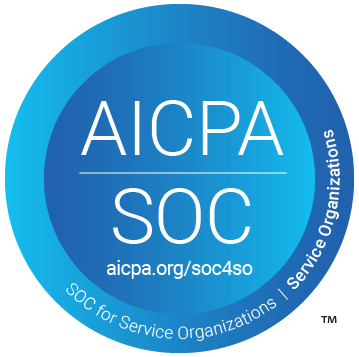Understanding the UK Address System
What is a postcode?
A UK postcode is created by Royal Mail, it is made up of two alphanumeric codes or five to seven alphanumeric characters. It is structured into two parts, the Incode and the Outcode. These two parts are then further divided into an Area, district, Sector and Unit.
The first two letters will signify the postal area, followed by one or two digits indicating a district within that area. This is followed by a number donating the sector within that distract. There two final letters which are allocated to streets or sides of a street.
Outcode:
This is the first part of a Postcode; this is used to indicate the postal area which directs the mail to a physical sorting office.
Incode:
This is the second part of the postcode followed after the ‘Outcode’ and is used to indicate specific streets or sides of a street which physical sorting offices can sort the mail into a postal delivery “walk”
How do UK postcodes work?
Almost all single households and business addresses share over 1.7 million postcodes. Postcodes are part of a coding system created by the Royal Mail. Postcodes are an abbreviated form of an address, enabling a set of delivery points (normally letter boxes or delivery points) to be grouped.
Delivery Point:
A single letterbox or place where physical mail is delivered to, usually associated with a house or business.
Delivery Point Suffix (DPS):
A unique 2-digit code for each Delivery Point in a Postcode, a DPS enables the Royal Mail to identify any deliverable address in a post code.
- The DPS code format is a number followed by a letter – providing greater precision for deliveries. This is important because postcodes are not always sufficient to uniquely identify each delivery point, particularly with shared buildings.
Dependent Locality:
A Town or village that is included in an address, but the delivery point is outside the boundary of the main postal town that serves it.
Dependent Street:
When the address is at times included in delivery point but is not on the main street, for example shopping malls of a high street.
Double-Dependent Locality:
An industrial estate, hamlet, business area or village that is smaller than a dependent locality and sometimes included in the address
Grid References:
The Ordnance Survey use ‘grid lines’ to divide the map into ‘grid squares’ the vertical lines are called eastings. They are numbered which increases to the east. The horizontal lines are called northings – these numbers increase in the northly direction.
- Grid References that can be used to give a geographic location of something using a four or six figure grid reference. For PAF they define the average centre point of a Postcode.
PAF:
Known as Royal Mails Postal Address File, it contains over two million postcodes and thirty million delivery points across the UK. The Postal Address File (PAF) is updated daily from over 90,000 postal works and consumers that inform Royal Mail of changes, such as residential, business and property and premise.
Not Yet Built:
A dataset provided by the Royal Mail to identify properties that are in the planning and construction stage. There are over 5000 records being added to this dataset each month.
Multiple Residence:
A dataset that works alongside Royal Mails PAF which provides addresses that are made up of multiple residence properties, eg a properties that share the same front door and letterbox.
Eircode is Ireland's National Postcode System. An Eircode is seven character alpha-numeric code made up of two parts. The first part (a Routing Key) consists of three characters and defines a principal post town span of delivery. The second part (a Unique Identifier) is unique to an address and distinguishes one address from another.
Geocodes:
Used to verify postal address data and appended with highly accurate latitude and longitude coordinates, to deliver location data at a rooftop level. Geocodes are very valuable in improving logistics and delivery; through to helping encourage footfall instore, delivering sales clustering for marketing purposes, and even in enabling the insurance industry to evaluate precise location-based risk.
Geodata:
Data made up of geographical and administrative grid references (in ETRS89 & OSGB36 format), and Local Ward and Health Authority codes and names. In the UK, this is supplied by the Office of National Statistics (ONS)
Thoroughfare Level PAF:
narrowed to the street level only, not the delivery point details. This includes everything from dependent main street, double dependent like estates, hamlets, and business areas, as well as the town or village included in the address.
NHS Health Authority Code:
Included in ‘Geodata’ it is used to identify Health Authorities or boards responsible for patient care and funding, this is made up of a three character code and is associated within each postcode.
NHS Primary Care Trust Codes:
Taken from the ONS (Office of National Statistics) it is a three letter code used to identify a general practice clinic (GP) or groups of GPs
NLPG:
The National Land and Property Gazetteer is a database record of multi-lingual land and property addresses which are located across England and Wales. It provides a framework for integration from a local application using a unique address key. This database is similar to PAF with the Postcodes being the same but addresses may differ.
PAON:
The Primary Addressable Object Name is a key element of the National Land and Property Gazetteer (NLPG), is it the first part of unique address key used for framework integration.
SAON:
The Secondary Addressable Object name is the second part of the National Land and Property Gazetter (NLPG), is it the second part of the unique address key used for defining floor levels e.g. “third floor”.
NSPD:
The National Statics Postcode Directory is a dataset supplied by the OHS (Office of National Statistics) and is updated quarterly. It contains geographic information on National Parks, Workplace Zones, Electoral areas, Census and Government Offices.
UDPRN:
The Unique Delivery Point Reference Number is an 8 digit code, unique to each postal address (remains unchanged), particularly valuable for organisations working in delivery and logistics, shipments, site work, and anyone who needs to identify a delivery point correctly the first time, every time.
UPRN:
The Unique Property Reference Number (UPRN) was created by the Ordnance Survey (OS) and consists of numbers up to 12 digits long. Local governments allocate a unique number for each piece of land and property, which remains the same whatever its status. This highly accurate location-based data helps improves logistics and delivery.
Raw Data:
When a file of data is in a different or fixed format, it can be PAF, Geodata or another dataset supplied as a fixed width, csv or large multi segmented file which needs to be converted in a more useable file depending on the needs of the person or customer.
How is a UK address structured?
A standard UK address typically includes the recipient's name, house number or name, street name, locality (if applicable), town or city, postal code, and the country (if sending mail from abroad).
What is the difference between a street address and a postal address?
A street address typically includes the house or building number and street name, while a postal address includes additional details like the town, postal code, and country to ensure proper mail delivery.
How do I find a postcode?
You can find postcodes through the Royal Mail website, online postcode lookup tools, or by asking the recipient directly. Additionally, many online mapping services provide postcode information.
Do all areas in the UK use the same address format?
While the basic structure is the same, there may be variations. For example, addresses in rural areas might not have a street name, and instead, they may rely on locality or descriptive directions.
How are addresses formatted for businesses in the UK?
Business addresses follow the same basic format as residential addresses, with the addition of the company name. It usually includes the company name, building number or name, street name, town or city, postal code, and country.
Can I send mail without a postcode?
While it's technically possible, using a postcode is highly recommended for accurate and timely delivery. Postcodes are essential for sorting and directing mail to the correct location.
How often do postcodes change?
Postcodes may change due to urban development, new buildings, or other factors. However, significant changes are relatively infrequent, and updates are managed by postal authorities.
Can I use a postcode to find a specific location on a map?
Yes, postcodes can be used in mapping services to locate specific addresses. However, be aware that a single postcode may cover multiple addresses, especially in densely populated areas.
Why Melissa?
As the leader in address verification, Melissa combines decades of experience with unmatched technology and global support to offer solutions that quickly and accurately verify addresses in real-time, at the point of entry. Melissa is a single-source vendor for address management, data hygiene and pre-sorting solutions, empowering businesses all over the world to effectively manage their data quality.
250 +
Countries & Territories
1000555787 +
Addresses Verified
40 +
Years Of Experience
10000 +
Satisfied Customers Worldwide






